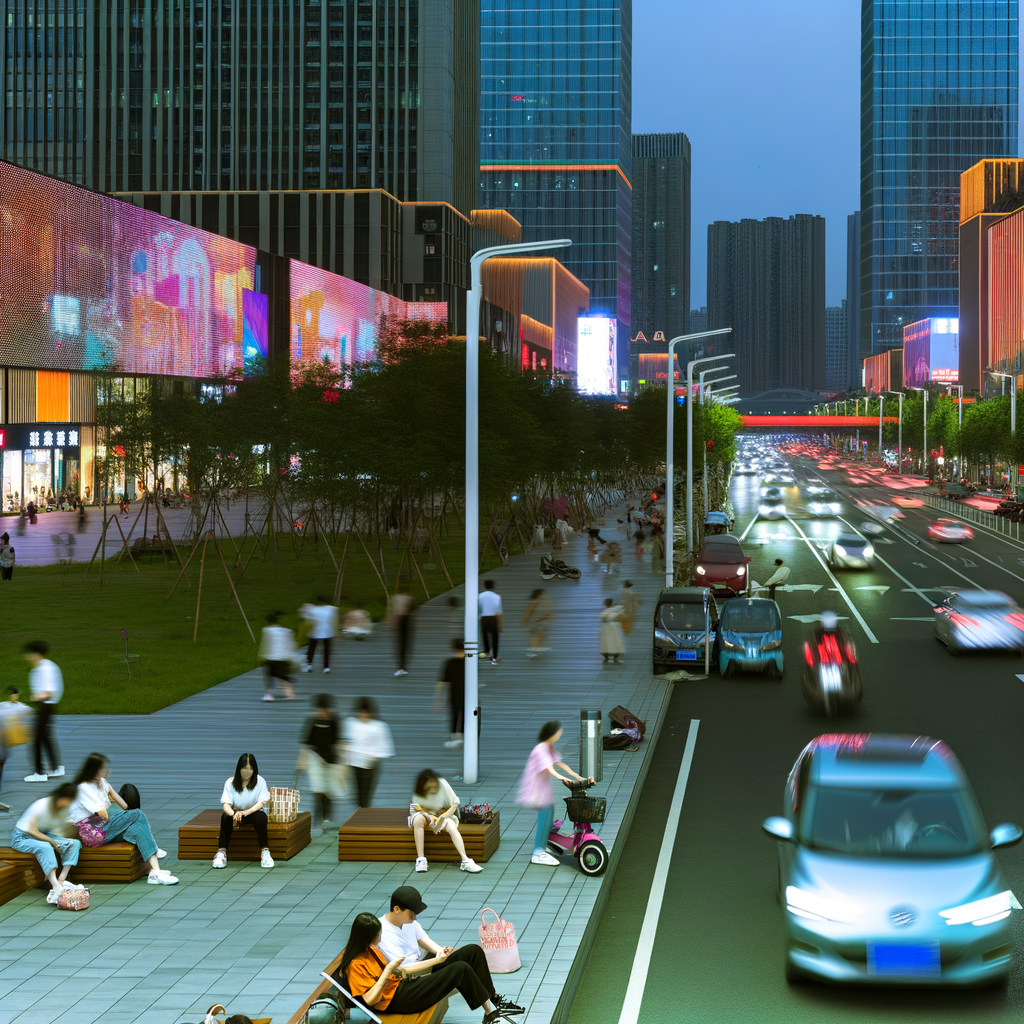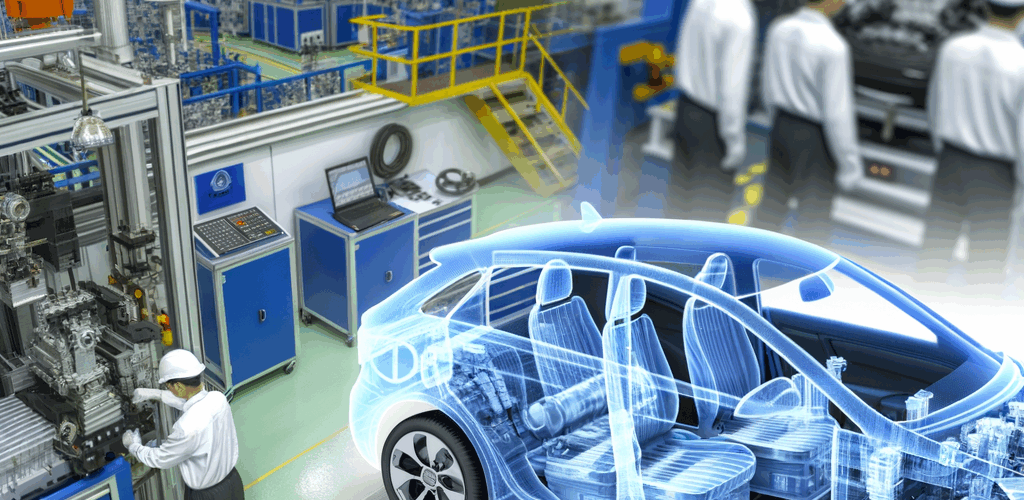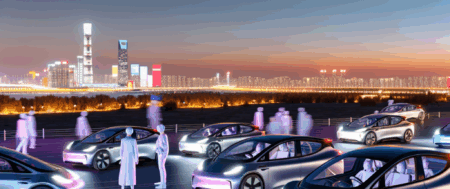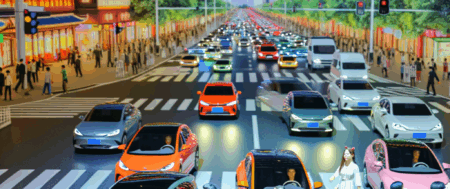TL;DR: China, the world’s largest automotive market, is experiencing a surge in demand for Electric Vehicles (EVs) and New Energy Vehicles (NEVs) amid its growing economy, urbanization, and environmental concerns. This vibrant market offers significant opportunities and challenges for both foreign automakers and domestic car brands, navigating through intense market competition, consumer preferences, and a complex regulatory landscape. The push towards EVs and NEVs, driven by robust government incentives and a commitment to sustainability, highlights the need for strategic partnerships and joint ventures to successfully access this dynamic market. Technological advancements and a deep understanding of the regulatory environment are crucial for tapping into China’s vast consumer base and maintaining a competitive edge in the face of global environmental and economic shifts.
In the heart of a rapidly transforming global automotive landscape, China emerges as the unequivocal leader, boasting the title of the world’s largest automotive market. This pivotal role is not only defined by its unparalleled production and sales figures but also by its profound influence on the industry’s direction, especially in the realms of Electric Vehicles (EVs) and New Energy Vehicles (NEVs). As the Chinese economy continues to burgeon, fueled by an expanding middle class and accelerated urbanization, the demand within the automotive sector has seen a significant shift. Consumers are increasingly leaning towards both domestic car brands and foreign automakers, with a pronounced tilt towards environmentally friendly vehicles, thanks to substantial government incentives and growing environmental concerns.
This comprehensive analysis delves into the intricate tapestry of China’s automotive market, characterized by its competitive dynamism and shaped by a complex regulatory landscape that foreign and domestic players navigate through strategic partnerships. “Navigating the Landscape: Understanding the World’s Largest Automotive Market in China” provides a foundational overview of the factors propelling China to the forefront of the automotive world. From the surging interest in “Electric Dreams: How EVs and NEVs are Driving China’s Automotive Future” to the essential “Partners in Drive: The Role of Joint Ventures in Accessing China’s Auto Industry,” each section unravels the multifaceted nature of the market.
The narrative further explores how “Rules of the Road: Adapting to China’s Complex Regulatory Landscape for Automotive Success” and “The Consumer Engine: Exploring the Impact of Urbanization and Growing Economy on China’s Car Demand” are pivotal in understanding the market’s dynamics. Moreover, “Eco-Motion: Addressing Environmental Concerns with China’s Shift to Electric Vehicles” and “Global Meets Local: Foreign Automakers’ Strategic Partnerships with Domestic Car Brands” shed light on the strategic maneuvers companies must undertake to thrive.
As we venture into “Ahead in the Race: How Technological Advancements Fuel China’s Market Competition,” the spotlight turns to innovation as a key driver of success. “Powering the Drive: The Influence of Government Incentives on the Electric Vehicle Boom” and “Steering Through Change: The Dynamic Interplay of Consumer Preferences and Market Trends in China’s Auto Industry” underscore the ever-evolving nature of this market.
Understanding China’s automotive market is crucial for stakeholders looking to navigate its opportunities and challenges successfully. With its vast consumer base, emphasis on sustainability, and the government’s role in shaping the automotive future, China’s market is not just a powerhouse of production and sales but a beacon of innovation and strategic foresight in the automotive industry.
1. “Navigating the Landscape: Understanding the World’s Largest Automotive Market in China”

Navigating the complex and dynamic landscape of the world’s largest automotive market, China, presents a unique challenge and opportunity for both domestic car brands and foreign automakers. With its rapidly growing economy, expanding urbanization, and an increasingly affluent middle class, China has solidified its position as a pivotal player in the global automotive arena. This surge in economic growth and consumer purchasing power has led to a significant uptick in demand for a wide variety of vehicles, especially electric vehicles (EVs) and new energy vehicles (NEVs), driven by strong environmental concerns and substantial government incentives.
The Chinese automotive market is characterized by its high competition and is heavily influenced by consumer preferences, technological advancements, and an intricate regulatory landscape. Foreign automakers looking to tap into this lucrative market often find themselves forming joint ventures with local Chinese companies. This strategic partnership is not just a means to navigate the complex regulatory environment but also a crucial step to gaining access to the vast consumer base eager for both international and domestic car brands.
The emphasis on EVs and NEVs highlights China’s commitment to combating pollution and reducing its carbon footprint. This focus is further bolstered by government incentives aimed at promoting the adoption of cleaner and more sustainable vehicles. Consequently, the market for electric vehicles in China is not just the largest but also among the most rapidly evolving segments, underscored by significant technological advancements and increasing consumer preference for environmentally friendly transportation options.
Understanding the Chinese automotive market requires a deep dive into the nuances of market competition, the regulatory framework, and the evolving trends of consumer behavior. The environment is highly dynamic, with government policies playing a significant role in shaping the industry’s direction. For instance, the push towards electrification and the development of smart, connected vehicles are areas where the confluence of technological advancements, government support, and consumer interest are particularly evident.
For foreign automakers and domestic players alike, success in this market depends on their ability to adapt to the fast-changing landscape, understand and anticipate consumer needs, and forge strategic partnerships that leverage local expertise while navigating the regulatory complexities. The China automotive market, with its vast potential and challenges, remains a key battleground for global automotive dominance, driven by a combination of growing economy, urbanization, and a strong push towards innovation and sustainability.
In conclusion, the China automotive market stands as the largest and one of the most complex landscapes for both domestic and foreign automakers to navigate. Its position as the top player in the global automotive industry is solidified by a growing economy, rapid urbanization, and an expanding middle class with evolving consumer preferences. The shift towards Electric Vehicles (EVs) and New Energy Vehicles (NEVs), driven by environmental concerns and robust government incentives, highlights the market’s dynamic nature and its pivotal role in shaping the future of mobility.
Foreign automakers looking to tap into this lucrative market have found success through strategic partnerships and joint ventures with local Chinese companies, a critical move to comply with the regulatory landscape and to connect with the vast consumer base. Meanwhile, domestic car brands continue to flourish, benefiting from a deep understanding of market competition, consumer preferences, and the ability to swiftly adapt to technological advancements.
As the China automotive market continues to grow and evolve, it is clear that success requires more than just a superficial understanding of its components. It demands a deep knowledge of local regulations, consumer behavior, strategic partnerships, and the agility to respond to a rapidly changing environment. For companies willing to undertake these challenges, the rewards are substantial in the world’s largest automotive market, where innovation, sustainability, and strategic foresight are the keys to driving forward in the race for global automotive dominance.







